
SEO is hard, and it’s even harder when you don’t understand how search engines work.
The general SEO practices include writing blog posts, doing on-page optimization, internal linking, and building backlinks. Well, things have changed over the years.

There is a new concept you should be paying more attention to. It’s called Topical authority (also called topical relevance).
By establishing topical authority in a niche, you will—in no time—start reaping the fruits of your SEO work. This concept is not hard, so let’s start with the basics.
What is Topical Authority?
A topical authority is a concept that Google, and other search engines, perceive your site as expert or authority over a particular subject, topic, or niche. Simply put, it is a technique for measuring the “depth of expertise”.
When you create tons of content around a subject or topic, you are simply building topical authority. Search engines will quickly identify your site as a go-to resource for that subject.
You shouldn’t confuse this with creating an in-depth guide; it’s different.
An ultimate guide is usually long-form content that answers all questions around a topic in one article. But, topical authority is creating tons of pieces that cover various sections of a subject.
And the reward for being an authority in a niche is you can outrank sites with higher authority (DA or DR) than yours.
As proof, spot how baseballmonkey.com with DA 48 ranks first for the keyword “best baseball gloves”, while nymag.com with DA 92 ranks fifth. This is because the first site has covered more topics around baseball than any other site in the search result.
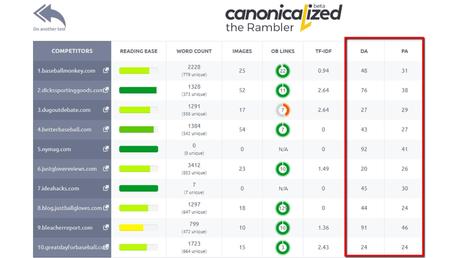
And if you regularly do searches on Google, you may have noticed many low authority sites, with fewer backlinks outranking sites with thousands of backlinks.
This shows that content depth and topical relevance are as important (or more vital) than link building.
Where This Authority Originated From
The origin of topical authority in SEO can be traced back to Google’s 2013 Hummingbird update and the introduction of E-A-T in 2018.
Hummingbird update is about Google taking its time to understand the context of a query and its search intent. Years ago, Google treated words differently, even if they were related, making search results to be filled with junk.
For example, before the Hummingbird update, “how to add text to an image” and “how to add text to a photo” are two different queries.
But now, Google understands sites and queries better.
Also, there is E-A-T (Expertise, Authoritativeness, and Trustworthiness), which started in 2018.
Google introduced the E-A-T concept to ensure that the best content is matched with the relevant search query. Establishing Topical relevance is all about proving expertise, authoritativeness, and trustworthiness in your niche.
How to Establish Topical Authority for SEO
Now let’s see how to build topical authority with your website.
1. Pick a Niche
This is the very first step, and you need to get it right.
Picking a niche (subject or topic) on which you want to build topical authority will simplify all other steps. The ideal thing is to pick a niche you understand so well. Then, it will be easy to churn out tons of content (except if you want to pay for content writing services.)
The easiest way to do this is to find a particular topic (less competitive) in your niche with enough audience, then build authority around it.
For example, instead of choosing “Ecommerce platforms” as a niche, you are better off picking only on Shopify or any eCommerce platform. Once you build enough relevancy around the Shopify niche, you can easily rank for content related to eCommerce platforms
It’s actually easier to rank “how much does Shopify Cost a month” than “how much does an eCommerce platform cost a month”. The former is less competitive and more specific than the latter.
Picking a niche for building Topical relevance is all about narrowing down on a broad topic. Remember, every article you will create will be around that topic. So, make sure you do your research before picking a niche.
For example, instead of choosing “Ecommerce platforms
Click To Tweet
2. Start with Pillar Content
First, you need to start with creating pillar content (which I call the Parent content). This type of content is usually in-depth and covers every sub-topics and question around a topic; Ultimate guide, for example.
Pillar content shouldn’t necessarily be one piece; it should be as much as you need.
When you have those kinds of articles on your site, you are on the right path of establishing authority since your blog readers and Google will find your content valuable.
For instance, assuming you want to create a pillar blog post on “Facebook Marketing,” the content should be in-depth enough to cover subsections like:
- How to create a Facebook business page
- Or, How to advertise on Facebook
- How to get likes on Facebook. etc.
The idea of pillar content is creating a piece that’s well-researched and covers every little detail.
Pillar content shouldn't necessarily be one piece; it should be as much as you need. #InspireToThrive
Click To Tweet
3. Create More Content from Sub-topics
After creating your pillar content, the next step is to identify related topics and use them to create “children” blog posts. There are many ways to uncover sub-topics of your keyword; you can identify them from your pillar content or extract them from Google autosuggest.
Assuming you want to find sub-topics for the keyword “Facebook marketing” with autosuggest, you just need to type in the keyword and wait for Google to suggest related topics.
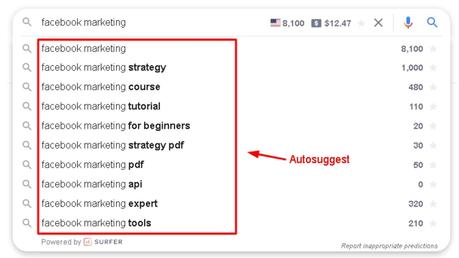
Another autosuggest strategy I use to uncover hidden topics is to add a phrase to the main keyword and allow Google to show more related topics. Like this:
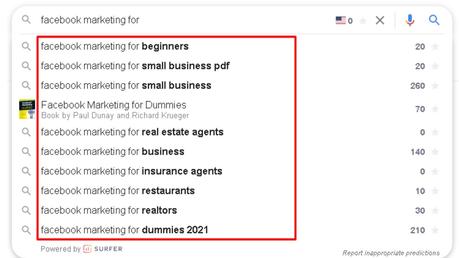
You want to find as many sub-topics as possible to create blog posts on because once Google ranks one of your blog posts, other related content will start moving up.
It’s logical and proven that Google ranks sites that cover a topic extensively.
You want to find as many sub-topics as possible to create blog posts on because once Google ranks one of your blog posts, other related content will start moving up. #bloggingtips
Click To Tweet
4. Answer All Questions
Establishing topical authority in a niche means you have answers to every (or most) question around the topic. You shouldn’t go after only keywords with high search volume. Many keywords aren’t often searched, but you need to write about them to establish authority.
There are a lot of ways to find questions to answer in your niche. The easiest way is leveraging a free tool like Answer the public and the “People also ask” section in the search results.
For example, if you search for “Shopify Enterprise Pricingon Google, you can scroll down to the “People also ask” section to find tons of questions you can create content on.
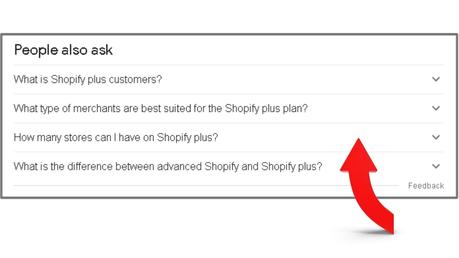
Using the Answer the Public tool is also simple. Just search for your main keyword, and check the “questions” tab to get hundreds of questions people are searching for around that keyword.
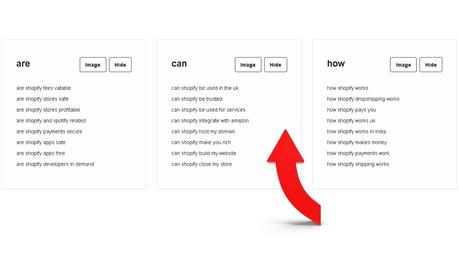
After finding those questions, you want to organize and save them to avoid losing them. I regularly use the Strive content calendar tool since it allows me to save my content ideas for future use easily.
Establishing topical authority in a niche means you have answers to every (or most) question around the topic. #SEO
Click To Tweet
5. Leverage Latent Semantic Indexing (LSI)
Google is getting smarter every day in understanding quality content. When writing about a topic, it’s natural to sprinkle words related to that topic, and those words are called LSI keywords.
Let’s say you are writing a blog post on “accounting”. You should naturally include words like money, finance, bank, company, etc.
LSI keywords are phrases that are semantically related to your primary keyword, and including them in your content will help build topical relevance within an article.
When you publish an article without including LSI keywords, you are quickly telling search engines that you don’t understand the topic, and that could translate to poor ranking.
The best place to find terms related to your keyword is by checking the “related researches” section below a Google search result.
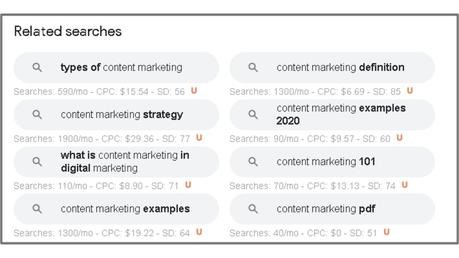
You can also leverage a tool called LSI graph to uncover hundreds of related terms to your keyword.
In the past, webmasters used keyword stuffing to dominate SERP results; now, it has shifted to LSI optimization. Building topical relevance for all your content will make your overall site authoritative.
LSI keywords are phrases that are semantically related to your primary keyword, and including them in your content will help build topical relevance within an article. #keywords
Click To Tweet
6. Top your Internal Linking Game
Good internal linking doesn’t only help your readers navigate through your site quickly; it also helps strengthen the authority of your blog by spreading link juice to other related posts.
When Search engine bots crawl your site, they can effortlessly identify links related to each other and instantly assume your blog’s authority. So the more interlinking on your site to similar content, the more authority you can build.
In many scenarios, I have seen websites leveraging only internal linking to rank high in search results. Simply put, internal linking is as powerful as link building.
The only difference is that the former is much more important in establishing topical authority.
When Search engine bots crawl your site, they can effortlessly identify links related to each other and instantly assume your blog’s authority. #SEO
Click To Tweet
7. Crown it with Link Building
Just because I lay more emphasis on on-site activities (creating content and internal linking) doesn’t make backlinks useless. However, content creation and optimization are more potent than backlinks when building topical relevance.
Simply put, you should pay more attention to content than link building.
Sticking with the baseball gloves example I referenced earlier, you can see how nymag.com ranking fifth has more authority and links than the site ranking first.
Needless to say, link building will never go out of fashion. You still need links to push your content up in search results quickly.
Without backlinks, establishing authority might take more time compared to when you are building links.
Simply put, you should pay more attention to content than link building. #SEOTips
Click To Tweet
Establishing Topical Authority with Clickflow
While there are hundreds of keyword research tools, it takes a lot of digging to find a tool that helps in establishing expertise in a niche.
But I found one — Clickflow.
ClickFlow’s Content Editor gives you an unfair advantage by showing you gaps in your content that you should consider filling — e.g. semantically related keywords and subtopics for your main topic that you haven’t yet covered.
In other words, it grades your content for topical relevance.
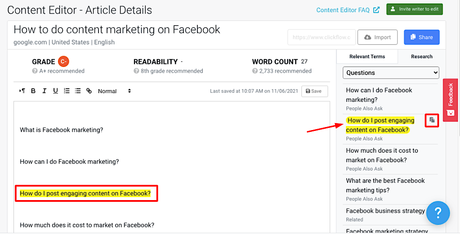
When you cover related questions across your core topic, it has been proving again and again that Google will reward your site.
At the moment, I am really enjoying Clickflow. (if you know of any other tool with the same purpose as Clickflow, let me know in the comment section).
Conclusion
The SEO game keeps changing every day. Therefore, as a webmaster, you need to follow the trend to stay on track. One way to always stay on top of the game is consistently churning out quality content.
However, the concept of Topical Authority seems to be a long-term win. Hence, Google will always prioritize providing users with the most in-depth answers from topic experts.
So if you are publishing tons of blog posts while establishing topical relevance, you will always be on the receiving end as a winner.
How are you gaining topical authority for your website or blog today? We’d love to know in the comments below!

